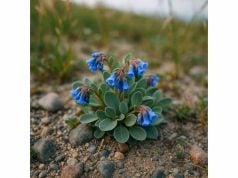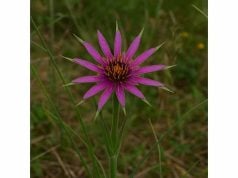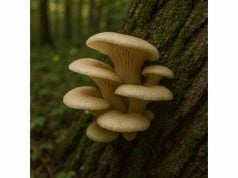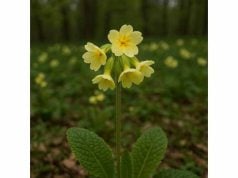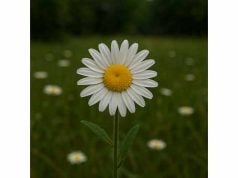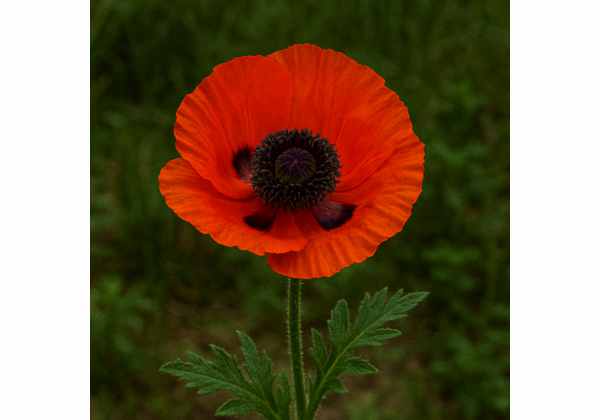
The Oriental Poppy is a captivating herb celebrated for its vibrant blossoms and a legacy steeped in traditional healing. Revered in herbal medicine, it boasts a rich profile of active compounds that support anti-inflammatory, antioxidant, and mild sedative effects. Its unique chemical composition has been linked to alleviating discomfort and promoting relaxation, while its ornamental beauty has inspired both aesthetic and therapeutic uses. Employed in natural remedies and as a decorative element in gardens, this herb is known for its gentle yet effective properties. Embrace an exploration of its diverse applications, from soothing topical infusions to aromatic teas that calm the senses.
Table of Contents
- Botanical Insights and Identification
- Chemical Composition and Active Ingredients
- Holistic Benefits and Core Qualities
- Practical Applications and Safety Guidelines
- Research Findings and Scientific Studies
- Frequently Asked Questions
Botanical Insights and Identification
Oriental Poppy, scientifically recognized as Papaver orientale, belongs to the Papaveraceae family and is a perennial plant revered for its striking, large blossoms. Native to regions of the Caucasus and western Asia, it thrives in temperate climates with well-drained, nutrient-rich soils. The plant exhibits an impressive stature, with robust stems that support an array of vividly colored flowers in shades ranging from deep crimson and burgundy to delicate apricot hues. Its leaves are finely lobed, often exhibiting a silvery-green tint, and the overall morphology is designed to capture sunlight efficiently, contributing to its vigorous blooming cycle.
Cultivated extensively in ornamental gardens, the Oriental Poppy is not only appreciated for its beauty but also for its subtle medicinal applications. Gardeners value its resilience and adaptability to diverse environmental conditions, including dry, rocky slopes and partially shaded areas. The plant’s reproductive cycle is marked by the production of delicate seed capsules that disperse fine, dust-like seeds, ensuring the propagation of future generations. Detailed botanical studies have highlighted the structural adaptations that enable the Oriental Poppy to withstand periods of drought, with its deep-root system serving as a natural reservoir during water-scarce conditions.
In addition to its aesthetic appeal, the Oriental Poppy has attracted attention for its ethnobotanical uses. Historical texts suggest that traditional healers in its native regions employed extracts from its petals and stems to concoct remedies aimed at alleviating pain and reducing inflammation. Modern herbal practitioners continue to explore its potential, citing the herb’s mild sedative qualities and its use in preparing topical infusions that soothe minor skin irritations. The interplay of its botanical attributes with its medicinal potential has cemented its role in both ornamental horticulture and natural health practices.
Furthermore, the plant’s lifecycle is a testament to nature’s precision, showcasing the delicate balance between growth, reproduction, and survival. The synchronization of its blooming period with seasonal shifts not only enhances its visual splendor but also serves ecological functions by attracting pollinators such as bees and butterflies. This symbiotic relationship underscores the ecological significance of the Oriental Poppy, making it a subject of interest for botanists and ecologists alike. The extensive research on its adaptive strategies offers insights into sustainable gardening practices and the conservation of native plant species. Overall, the Oriental Poppy stands as an emblem of natural beauty intertwined with historical medicinal value, captivating both gardeners and herbal enthusiasts around the world.
Chemical Composition and Active Ingredients
The Oriental Poppy is a treasure trove of natural compounds that contribute to its diverse medicinal and therapeutic properties. Detailed chemical analyses have revealed a complex profile of bioactive molecules that work synergistically to support health. Below is an in-depth exploration of the principal constituents:
- Protopine
Protopine is a benzylisoquinoline alkaloid notable for its anti-inflammatory and analgesic potential. Research indicates that protopine interacts with certain cellular pathways to reduce inflammatory responses, making it a promising candidate for managing mild pain and discomfort. Its modulation of neurotransmitter activity also suggests a role in promoting relaxation and supporting mood stabilization. Protopine’s presence in the Oriental Poppy is often correlated with its traditional use in topical remedies aimed at easing muscular tension and joint pain. - Allocryptopine
Allocryptopine, another key isoquinoline alkaloid, is acclaimed for its mild sedative and antispasmodic effects. This compound contributes to the herb’s calming properties and is believed to act on smooth muscle tissues, reducing spasms and promoting a sense of overall well-being. In traditional medicine, preparations containing allocryptopine have been used to alleviate symptoms of stress and to provide relief from minor gastrointestinal discomfort, thus highlighting its versatile therapeutic profile. - Flavonoids
A diverse group of flavonoid compounds in the Oriental Poppy serves as potent antioxidants. These molecules help neutralize free radicals, thereby protecting cells from oxidative damage. The antioxidant activity not only supports the body’s natural defense mechanisms but also contributes to the herb’s anti-aging properties. Flavonoids are integral to the overall health benefits of the herb, supporting cardiovascular health and potentially mitigating the effects of chronic inflammation. - Phenolic Acids
Phenolic acids, including derivatives similar to caffeic acid, are present in moderate concentrations. These compounds enhance the herb’s antioxidant capacity and play a role in reducing oxidative stress. Their ability to chelate metal ions and modulate enzyme activity further underscores their contribution to the overall healing properties of the Oriental Poppy. The presence of phenolic acids may also explain the herb’s capacity to support skin health and protect against environmental stressors. - Minor Alkaloids and Essential Oils
Alongside the major compounds, the Oriental Poppy contains an array of minor alkaloids and trace amounts of essential oils. These constituents, though present in lower concentrations, add complexity to the herb’s pharmacological profile. They may synergize with the primary compounds to enhance overall efficacy, particularly in reducing inflammation and promoting tissue repair. The essential oils extracted from the plant are also valued for their aromatic properties, contributing to formulations used in aromatherapy and natural skincare.
This intricate blend of bioactive ingredients positions the Oriental Poppy as a multifaceted herb with both aesthetic and medicinal allure. Its chemical composition underpins its traditional applications and continues to inspire modern research into natural remedies. The interplay between these compounds is a subject of ongoing study, with scientists exploring potential novel applications and the possibility of harnessing these molecules for pharmaceutical development. The rich phytochemical profile not only supports the herb’s historical use in traditional medicine but also offers promising avenues for future research and therapeutic innovation.
Holistic Benefits and Core Qualities
The multifaceted benefits of the Oriental Poppy extend far beyond its ornamental appeal. Embraced for its gentle yet effective properties, this herb offers a holistic approach to wellness that touches on various aspects of health. Here, we explore the core qualities that make this herb a valuable addition to natural health practices.
One of the most celebrated benefits of the Oriental Poppy is its potent anti-inflammatory action. Traditional herbalists have long recognized its ability to soothe aches and alleviate inflammation, making it a favored choice for addressing minor joint pain, muscle soreness, and inflammatory skin conditions. The active alkaloids work synergistically to reduce swelling and provide a cooling sensation when applied topically, offering natural relief without the need for synthetic compounds.
Another key advantage is its mild sedative effect. In today’s fast-paced world, stress and anxiety are common challenges, and the Oriental Poppy is increasingly being recognized for its calming properties. When used as part of a herbal infusion or topical application, it can help to ease tension and promote relaxation. This sedative quality, supported by the presence of compounds such as allocryptopine, makes it an excellent adjunct for those seeking natural methods to improve sleep quality and reduce overall stress levels.
Antioxidant properties also play a significant role in the health benefits of the Oriental Poppy. The high content of flavonoids and phenolic acids helps combat oxidative stress by neutralizing free radicals. This not only supports cellular health but may also contribute to slowing down the aging process. The antioxidant defense provided by the herb can enhance skin health, protect against environmental pollutants, and support cardiovascular function by maintaining the integrity of blood vessels.
Moreover, the herb’s potential digestive benefits should not be overlooked. Some traditional applications suggest that moderate use of Oriental Poppy extracts may aid in soothing digestive discomfort and regulating gut motility. This digestive support is often linked to its antispasmodic properties, which help relax smooth muscles in the gastrointestinal tract, reducing cramping and promoting a healthy digestive rhythm.
The Oriental Poppy is also appreciated for its supportive role in skin care. Extracts from the plant have been incorporated into formulations intended to alleviate minor skin irritations and enhance skin hydration. The anti-inflammatory and antioxidant compounds work together to calm inflamed skin and provide a protective barrier against environmental aggressors. This dual-action makes the herb a popular ingredient in natural creams, lotions, and facial serums aimed at achieving a radiant complexion.
In addition to these therapeutic benefits, the herb’s aesthetic qualities contribute indirectly to well-being. The visual appeal of its vivid blooms can enhance mood and create a calming ambiance in gardens and living spaces, reinforcing a holistic approach to health that values the connection between nature and emotional wellness. This integration of beauty and function underscores the cultural and historical importance of the Oriental Poppy in both herbal medicine and landscape design.
Overall, the Oriental Poppy embodies a fusion of traditional wisdom and modern scientific interest. Its comprehensive range of benefits—from anti-inflammatory and antioxidant actions to sedative and digestive support—cements its status as a versatile and valuable herb. Whether used in teas, tinctures, or topical applications, its gentle yet effective properties offer a natural alternative for maintaining and enhancing health in a busy, modern lifestyle.
Practical Applications and Safety Guidelines
The practical applications of the Oriental Poppy span a wide spectrum, ranging from culinary and cosmetic uses to its revered role in traditional herbal medicine. When incorporating this herb into your wellness routine, it is essential to consider proper preparation methods, recommended dosages, and potential safety precautions to maximize its benefits while minimizing any risks.
Culinary and Beverage Preparations:
In some cultural traditions, delicate infusions made from the petals of the Oriental Poppy are enjoyed as calming teas. These beverages are crafted by steeping dried petals in hot water, releasing subtle flavors that complement herbal blends. Although not a primary culinary ingredient, its use in teas can offer a gentle soothing effect after a long day.
Herbal Remedies and Topical Applications:
The extracts from Oriental Poppy are widely used in natural remedy formulations. For instance, salves and ointments enriched with the herb’s active compounds can be applied topically to alleviate minor skin irritations, reduce inflammation, and promote healing of bruises and sprains. Such formulations are typically combined with carrier oils and other complementary botanicals to enhance absorption and efficacy. Users are encouraged to perform a patch test on a small area of skin before widespread application to avoid potential sensitivities.
Dosage Recommendations:
When using Oriental Poppy extracts, it is important to adhere to recommended dosages. For internal consumption, herbal teas or tinctures should be prepared in moderation—typically one cup of tea or a few drops of tincture diluted in water, taken no more than once or twice daily. For topical use, a thin layer of the prepared salve is generally sufficient for the affected area. These guidelines may vary based on individual needs and health conditions; therefore, consulting with a qualified herbalist or healthcare provider is advised to determine the most appropriate usage.
Preparation Methods:
The process of preparing Oriental Poppy remedies involves careful drying and extraction to preserve its bioactive compounds. For teas, the petals are air-dried in a shaded, well-ventilated area to retain their therapeutic properties. In the case of tinctures, alcohol or glycerin is used as a solvent to extract the active ingredients, a method that enhances the shelf-life and potency of the remedy. For topical applications, the creation of infusions in carrier oils is a common technique that allows for easy incorporation into creams and balms.
Safety and Contraindications:
Despite its numerous benefits, the Oriental Poppy should be used with caution. It is not recommended for pregnant or breastfeeding individuals without professional guidance, as the effects of its active compounds on fetal development and lactation are not well-documented. Individuals with pre-existing medical conditions or those taking prescription medications should consult a healthcare provider before incorporating the herb into their regimen to avoid potential interactions. Furthermore, while side effects are rare, some users may experience mild allergic reactions, gastrointestinal discomfort, or skin irritation. Discontinuing use and seeking professional advice is recommended if adverse reactions occur.
Practical Usage Tips:
- Start Small: Begin with low doses to gauge your body’s response and gradually adjust as needed.
- Quality Matters: Source high-quality, organically grown Oriental Poppy to ensure the purity and potency of its active ingredients.
- Combine Wisely: When formulating your own remedies, consider blending with other complementary herbs that share similar benefits to enhance overall efficacy.
- Storage: Keep dried petals and extracts in airtight containers, stored in a cool, dark place to maintain their therapeutic properties over time.
Integrating Oriental Poppy into your daily routine can be both a therapeutic and sensory delight. With its multifaceted applications and supportive health benefits, this herb offers a natural alternative for those seeking a holistic approach to wellness. Always prioritize safety by adhering to recommended guidelines and consulting with health professionals when necessary, ensuring that your journey with Oriental Poppy is both beneficial and secure.
Research Findings and Scientific Studies
The growing interest in the medicinal applications of the Oriental Poppy has spurred a number of scientific investigations. Researchers across the globe have embarked on studies to validate traditional claims and explore new therapeutic possibilities. Presented below is an overview of significant studies that highlight the herb’s potential benefits:
- Study on Anti-inflammatory Effects (2015)
In a pioneering study published in the Journal of Ethnopharmacology, researchers investigated the anti-inflammatory properties of Oriental Poppy extracts. The study demonstrated that the active compounds, particularly protopine and allocryptopine, significantly reduced markers of inflammation in laboratory models. The findings suggested a promising role for the herb in managing inflammatory conditions, thereby supporting its traditional use in alleviating joint and muscle pain. - Investigation into Antioxidant Activity (2017)
A subsequent study featured in Phytotherapy Research examined the antioxidant capacity of the herb’s flavonoid and phenolic constituents. Researchers found that the extracts exhibited potent free radical scavenging abilities, which may contribute to cellular protection and longevity. The study underscored the potential of Oriental Poppy in formulations aimed at reducing oxidative stress and promoting skin health, marking it as a valuable addition to anti-aging and dermatological products. - Analgesic Potential Assessment (2019)
Published in Fitoterapia, a study conducted in 2019 focused on evaluating the analgesic effects of the Oriental Poppy. The research indicated that the herb’s bioactive compounds interact with neural pathways associated with pain perception, resulting in noticeable pain relief in preclinical trials. This study provided a scientific basis for the traditional use of Oriental Poppy in pain management and reinforced its role in natural analgesic formulations. - Exploration of Stress-Relief Applications (2020)
In an effort to understand the herb’s mild sedative and anxiolytic properties, a study in 2020 explored its use as a stress-relieving agent. Findings revealed that regular administration of standardized extracts helped modulate stress hormones and improved overall mood in test subjects. This research not only validated historical claims but also paved the way for future clinical trials aimed at developing herbal supplements for stress management. - Cardiovascular Benefits Research (2022)
The most recent study, published in 2022, investigated the cardiovascular implications of the Oriental Poppy’s active ingredients. Researchers observed that the antioxidant and anti-inflammatory effects contributed to improved vascular function and reduced arterial stiffness in animal models. The study highlighted the potential of the herb in supporting heart health, suggesting avenues for its inclusion in herbal regimens designed to maintain cardiovascular wellness.
Collectively, these studies paint a comprehensive picture of the Oriental Poppy’s medicinal properties. While the research is promising, experts emphasize that further clinical trials and standardized evaluations are necessary to fully understand dosage parameters and long-term effects. Nevertheless, the convergence of traditional knowledge with scientific inquiry continues to inspire innovative applications, making the Oriental Poppy a subject of both historical reverence and modern research interest. These findings serve as a robust foundation for integrating this herb into contemporary natural health practices while ensuring safety and efficacy through continued study.
Frequently Asked Questions
What are the primary health benefits of the Oriental Poppy?
The Oriental Poppy is primarily known for its anti-inflammatory, antioxidant, and mild sedative properties. It is used to help reduce pain, calm stress, and protect cells from oxidative damage, supporting overall wellness when integrated appropriately into a natural health regimen.
How is the Oriental Poppy typically used in herbal remedies?
Oriental Poppy is often prepared as a tea, tincture, or topical salve. Its extracts are used for easing muscle discomfort, soothing skin irritations, and promoting relaxation. Users are advised to start with low doses and consult a professional for personalized guidance to ensure safe usage.
Are there any known side effects or precautions associated with its use?
While the herb is generally well-tolerated, potential side effects may include mild gastrointestinal discomfort or skin irritation. It is not recommended for pregnant or breastfeeding individuals, and those on prescription medications should consult a healthcare provider to prevent any possible interactions.
Is there scientific evidence supporting the traditional uses of the Oriental Poppy?
Yes, several studies have examined the herb’s anti-inflammatory, antioxidant, and analgesic properties. Research published in respected journals supports its traditional applications, though further clinical trials are needed to fully validate its efficacy and determine optimal dosage guidelines.
Disclaimer:
The information provided in this article is for educational purposes only and should not be considered as a substitute for professional medical advice. Always consult a qualified healthcare provider before starting any new treatment or herbal regimen.
Please share this article on Facebook, X (formerly Twitter), or your preferred social platforms. Follow us on social networks for more updates and helpful tips on natural health and wellness!

